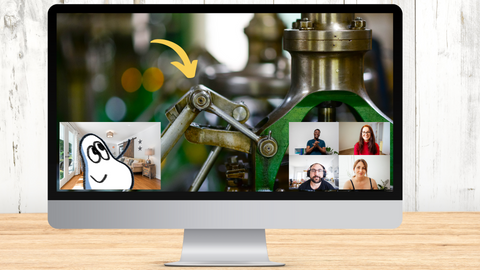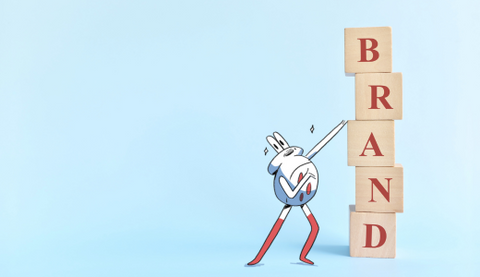Choose the right presentation style and information will flow effortlessly from you to your audience. They will ooh and ahh along with you and remember the take-home points for weeks to come.
Choose the wrong presentation style and the only person to walk away having learned something will be… you.
So, let’s get it right! We've got plenty of tips, tricks and one big secret that will help you nail it first time, every time.
Which presentation style is right for me?
Lots of articles promise to help you find the presentation style that suits you best. Sounds ideal, right? Surely, that’s the only one you need? Well, not quite…
It’s time to let you in on that secret: you're asking the wrong question. You're looking for the right presentation style to suit you... but you should be asking something else altogether.
Which presentation style is right for my topic and audience?
That's more like it!
The style you use depends on a huge number of factors, and almost none of them are you! Here are just a handful of things you’ll want to consider when choosing your presentation style:
- Who’s attending? Have they paid to come, or are they being paid (i.e., is it part of their job)? Do they all know each other already, and if not, would they like to?
- What is the objective of the session? Is it to share an update (are you sure it shouldn’t be an email?), to impart some knowledge, or to persuade people round to a point of view?
- When and where is the presentation being held? Is it hybrid, virtual or in person? Is it in your usual office space, or somewhere more interesting? What tech is available?
And so on.
Each approach has different strengths and weaknesses. They work in different situations, and for different people. To choose the right one, you’ll need to have a good idea of the content and objectives of your talk - we can’t help you with that, but we can share some rules to help you choose the right presentation style for the job, every time.
Presentation styles and when to use them
Visual presentation
Visual presentations can be so powerful. This approach works well if the subject matter lends itself to impressive images or videos, but also if it’s complicated and requires people to get their head around new concepts. Images can really help to untangle ideas, and help people remember them again in the future.

This approach works for most audiences and environments, online or offline. It’s a great default if you’re presenting to a large or varied audience.
There are a few things to remember:
- Keep it simple - big, bold images are better than detailed diagrams.
- Even if you’re using charts or tables, get rid of any text that isn’t completely essential. All of it… no, really!
- For in-person events, check the images you have chosen will look good on whatever size screen you’ll be using.
- Make sure that viewing the images isn’t integral to getting value from the talk; think about people with visual impairments (or a bad view/poor internet connection).
Storytelling
It’s no surprise that Storytelling makes an appearance on a Pip Decks list! Steve Rawling, Author of Storyteller Tactics, has already explained Why Storytelling is so Important For Businesses. It helps you win people’s attention and connect with them emotionally - both crucially important if you’re going to ask them for something in return!
So if you are aiming to persuade, this presentation style is particularly useful. It’s also great when you want to talk about a big picture - for example, a new product or feature - while remembering to highlight the little picture: the impact on an individual person.
Free Flowing
This approach can be like poetry to watch! If you know your subject matter inside out and you know the audience is super into it - for example, because they have paid to be there - this presentation style could be the one for you.
Free flowing does not mean unrehearsed - it just means that you’re not relying on slides, data or a script. It’s just you and your encyclopaedic knowledge of whatever it is you’re talking about.
So for example, if you’re a consultant who has been paid to do a deep dive into company culture or some really cool audience research, it could be fun just to talk through all the things you found so cool about that work.
It’s also great for formal and informal pitches, and is conversational so can help people feel comfortable asking questions too (find out more about encouraging lots of questions).
Interactive
Choosing to involve your audience is a brave move, but when it works it really pays off! This is a particularly strong approach if your topic is something it's easy to have a casual conversation about. If it's something super complex, getting people to contribute from the audience could end in silence.
If you're choosing this approach, you'll want to plan it carefully beforehand. What are you going to ask people for? A show of hands can be an easy 'in' to this presentation style, rather than asking people to talk out loud in front of everyone.
For example, if you're talking about the results of some research you have run, you can set a challenge: "Let's see if we've got any budding researchers in the room! What do you think I found when I did this? Raise your hand if you think sales increased". The good thing is that whether the audience is mostly right or wrong is irrelevant - it makes them feel like they are part of a conversation. It also keeps them on their toes!
Other presentation styles
There are lots of other styles to choose from: highly stylised approaches, like the Lessig method (one slide per minute, each featuring just one word or idea). You can deliver your talk like a stand-up comic (that is, in delivery rather than content, although the odd joke can help, too!).
You can also share materials beforehand, or even ask for people to answer a short digital survey, and then facilitate a discussion of each point instead of delivering all of the content yourself.
Take some time to watch talks on YouTube, or watch some TED talks, on similar topics, to see what else might work for you.
Combining presentation styles
You can combine any of the above, as well as your own unique approaches. For example, any of the above can be paired with the visual presentation style. And most approaches can incorporate a story, too.
Just make sure that you finish whatever you start - don’t kick off with a story unless you’re going to end the story at some point. You can use a whole story at once, or revisit it throughout the talk - but do tie up any loose ends!
Presentation style rules that always apply
There are a few things to remember regardless of the presentation style you choose to use. These are universal truths - yet you’ll see people get them wrong time and time again! Mostly, that’s because breaking these rules can make you feel more comfortable - but it comes at the cost of the quality of your presentation.
When it comes to text, less is more. None is great, too! Definitely do not put your script up on screen - people can read much more quickly than you can talk, and they will.
Focus on being still. Not completely statue still, but without any fidgeting or fiddling with your hair, hand wringing etc. These things are really noticeable!
Talk slowly - so slowly that it starts to feel a little bit silly is usually about the right pace. Even if you practice at this speed, you’ll inevitably speed up when you’re in front of an audience.
Having your script visible, fidgeting and talking quickly might all help you get through the experience, but they hinder the audience. If you want to know more universal truths, try Steve Rawling’s Essential tips for your first presentation. You won’t regret it!








